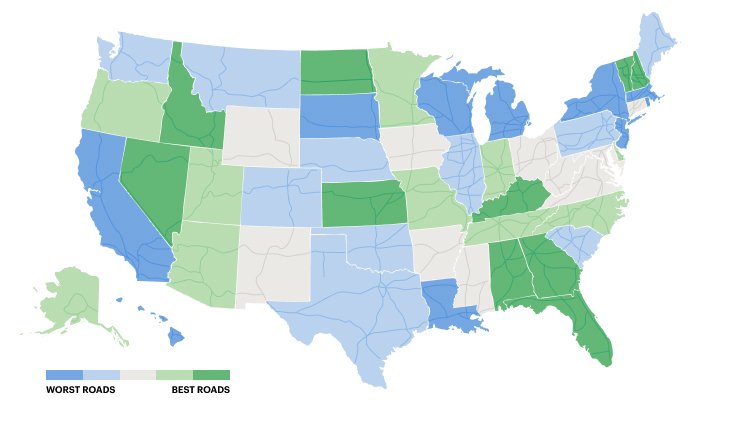Spreading Heart-Health Awareness This American Heart Month
Question: What’s the leading cause of death in the United States of America and claims more than 650,000 lives each year? The answer: heart disease.
Luckily, research and new technology have given medical professionals the tools to know more about the condition, prevent it, and treat it quicker than ever before. Despite the extraordinary progress that’s been made, there’s still more that can be done.
This American Heart Month, we celebrate by sharing information regarding the prevention of heart disease to eradicate the illness further. In this article, we will go over heart disease and discuss the top five ways truck drivers can avoid it.
What are the different types of heart disease?
Heart disease is a general term referring to any condition that affects one’s cardiovascular system. Overall, the disease comes in several variations, and they all can have severe impacts on the body.
Different types of heart disease include:
- Coronary Artery Disease: Coronary artery disease (also known as coronary heart disease) develops when the blood supply to the heart becomes clogged. It is known as the most common type of heart disease.
- Congenital Heart Defects: Those with a congenital heart defect are born with it. There are three main types of defects, including atypical heart valves, septal defects, and atresia.
- Arrhythmia: An arrhythmia is an irregular heartbeat that occurs when the electrical impulses controlling one’s heartbeat make it beat incorrectly. The variations of arrhythmias include tachycardia, bradycardia, premature contractions, and atrial fibrillation.
- Dilated Cardiomyopathy: A dilated cardiomyopathy is when the heart chambers become enlarged, and it is often caused by arrhythmias, genetics, past heart attacks, and toxins.
- Myocardial Infarction: A myocardial infarction (also known as a heart attack) is caused by an interruption of blood flow to the heart, which in turn causes damage to the muscle.
- Heart Failure: Heart failure is the slow deterioration of one’s heart due to untreated arrhythmias, coronary artery disease, high blood pressure, and other health conditions.
- Hypertrophic Cardiomyopathy: This condition affects the heart muscle by thickening the walls of the heart and making regular contractions more difficult, thus affecting the heart’s ability to circulate blood to the body. Hypertrophic cardiomyopathy commonly develops from inherited genetic issues and conditions.
- Mitral Valve Regurgitation: Mitral valve regurgitation happens when the heart’s mitral valve does not close properly, and blood flows back into the heart.
- Mitral Valve Prolapse: A mitral valve prolapse is caused by the heart’s valve flaps not closing correctly and pushing into the left atrium.
- Aortic Stenosis: An aortic stenosis happens when the pulmonary valve becomes thick or fuses, preventing it from opening correctly making it harder for the heart to pump blood.
5 Ways Truck Drivers Can Avoid Heart Disease
It’s no secret that most truck drivers are forced into a lifestyle that puts them at a greater risk for health conditions, including heart disease. The main factors contributing to this high risk for heart disease are poor sleep, smoking, unhealthy diet, lack of exercise, and high-stress levels.
Luckily, truck drivers can significantly reduce their risk and live long and prosperous lives by implementing a few healthy habits.
1. Get your rest.
Getting a good night’s sleep is crucial to your well-being, especially your heart health. Unfortunately, a full eight hours is not always possible for America’s truck drivers. However, science has proven that adults who regularly get less than seven hours of sleep per night are at a greater risk for conditions such as heart attack, heart disease, and stroke.
To help truck drivers get the best sleep possible, we recommend:
- Parking your rig in a safe and quiet area
- Blocking out as much light as possible with curtains or shades
- Use an eye mask and earplugs to help block out irritants
2. Quit smoking.
For years, we’ve seen numerous warnings about smoking and the damaging effects it can have on one’s health. A recent study showed that 51% of truck drivers smoke cigarettes, thus increasing their risk for heart disease by four times. Smoking cigarettes also increases the chances of dying from heart disease by three times. Fortunately, there are many ways to help break this unhealthy habit, including nicotine replacement therapy and smoking cessation hypnosis, and all can be done while on the road.
3. Follow a healthy diet.
Working as a truck driver means long hours on the road with few opportunities for a healthy meal. You can make subtle changes to your diet by stocking your rig with healthy snack options.
These options include:
- Fruit
- Granola bars
- Hard-boiled eggs
- Hummus with veggies or crackers
- Nuts
When you stop at a fast-food restaurant for a full meal, opt for one of the healthier options, including salads, protein wraps, or sandwiches.
4. Get regular exercise.
A lack of exercise can increase your risk of severe health conditions, including diabetes, weight gain, certain cancers, and heart disease. To avoid these health concerns, try to exercise several times a day for three to 10 minutes. This can be done before you start your day, during your breaks, or after you’ve finished your day. It’s essential not to overexert yourself and to start slow. In the beginning, stretch, squat, and walk your way to health for at least 12 minutes a day.
5. Manage your stress levels.
As many can imagine, stress and anxiety can put a strain on your mind, body, and soul. Those who experience frequent high levels of stress are more likely to experience heart disease.
To reduce stress, try these techniques:
- Breathing exercises
- Meditation
- Visualization
- Stretching
For more information on American Heart Month and heart disease, visit heart.org!









